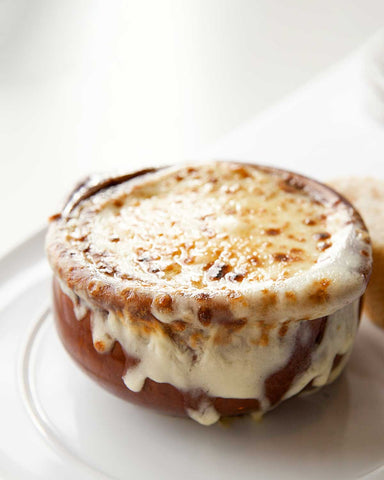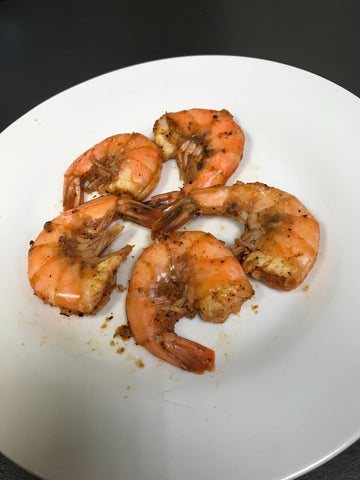
The Magic of Dry Brining
As we’ve written before, brining improves food, full stop. Brined meat, fish, and even tofu cook up evenly seasoned, juicier, and more delicious. Also, the moisture boost from brining protects delicate proteins against overcooking. This is why brining is recommended for major roasts, such as the Thanksgiving turkey.
However, wet brining has its drawbacks. It can require a lot of space and sometimes dilute flavors. Dry brining improves on wet brining. It not only solves all these issues but provides additional benefits of its own.
Introducing Dry Brining
So, what is dry brining? Simply put, it involves salting and then resting food before cooking it. Dry brining uses the food’s own moisture to form the brine that then soaks back in. Along with producing juicy, flavorful results, dry brining also helps us achieve better browning and crispy skin. And did we mention that it's also a much simpler process that takes up a lot less space than wet brining? Furthermore the risks of splashing and mess are completely gone!
The Benefits of Brining
All brining, whether wet or dry, seasons and adds moisture to uncooked foods to prepare them for cooking. Such foods cook up juicier and with better texture than their untreated counterparts. Brine is used rather than plain water because its salt content not only thoroughly seasons the foods but modifies the internal proteins to hold onto more moisture. This benefits most protein-rich foods but especially improves lean items such as chicken, turkey, and pork, which risk drying out over high heat.
Dry Brining Works Better
However, wet brining has its issues. Because the food is immersed in a relatively large amount of brine, the amounts of salt and moisture absorbed can’t be measured. Time provides some check on the process, but it’s imprecise. Therefore, wet brining can lead to over-seasoning and diluted flavors. It also makes skin and surfaces soggy and difficult to brown properly.
Dry brining avoids these problems. The salt used can be measured precisely, and draws out the natural juices to make the brine. This enhances and intensifies the food’s natural flavors. Also, salt leaves the surfaces dry for quick crisp browning. Furthermore, dry brining takes up much less space than wet brining, which is especially important with large cuts like a turkey breast or whole bird.
Sample Recipe: Dry Brined Turkey Breast
Our Michelin starred Chef Critchley created this delicious Dry Brined Turkey Breast recipe. It beautifully demonstrates the principles of dry brining:
- Salt the food evenly and thoroughly
- Store on a rack for airflow across all surfaces
- Give the process time. Small cuts such as steaks and fillets can rest 45 minutes to an hour at room temp. Large ones go in the fridge overnight.
- Don’t cook until the surface is dry. The salt will create the brine, wetting the surface, and then be absorbed into the food. As mentioned above, this takes time.
- If practical, uncover large cuts to assist in surface drying.
- Only rinse if the recipe calls for it, as this one does. You don’t want to sog up the surface you’ve prepared!
A Note: What Not To Dry Brine
There’s one category of food which should not be dry brined. That’s chopped or ground meat intended to be cooked fresh, such as hamburger. First of all, this kind of meat has much more surface area than a whole cut, which can quickly lead to over-seasoning. Secondly, the salt can cause the proteins in the meat to become sticky and give the finished burgers a sausage-like, bouncy texture. A simple salting right before cooking will give the burgers all the benefits they need.
With this exception of ground meat, dry brining will improve any animal-based protein you care to cook. And don’t forget -- to get the maximum benefit, cook your properly brined food on your Cinder Grill!



